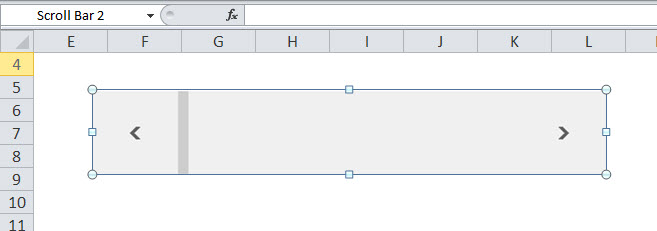

The field contrlValue in the control record contains the value of the control. The field nextControl then serves as the link which connects all controls belonging to a window.
:max_bytes(150000):strip_icc()/001-change-how-macs-scroll-bars-work-2260834-d0d59d4d63934654953750b15d1be9a9.jpg)
When handling activate events one needs to activate or deactivate all controls in a window. So the control record for the next control in a window starts at the address given by the FORTRAN statement: The parameter, nextControl, is a handle for the next control record in the window's control list. The fields of a control record that we will use to implement controls are: nextControl, controlValue and contrlRfcon. An exception is the first field of the control record, named nextControl, which is a handle to the next control in the window's control list. Most of the fields in the control record can be accessed through tool box calls rather than directly with the LONG function.

This field points to the window that contains the given control. For example if CONTROLBEG is an INTEGER*4 variable containing the beginning address of the control record then the FORTRAN statement LONG(CONTROLBEG+4) will give the contrlOwner field of the control record. Figure 2 lists these fields and gives decimal offsets which can be used to access the individual fields of the control record from FORTRAN. Each control that is defined has a control record associated with it. A record is a Pascal data type used on the Macintosh to describe or specify windows, dialogs, controls, events, etc. Part codes and ID numbers for Standard ControlsĬontrol Record. Control Part Codes Control Definition ID push button 10 0įigure 1. Part numbers and control definition ID's for the standard controls are listed in Figure 1. The scroll bar on the other hand is more complicated and has five parts: elevator box or thumb, up arrow, down arrow, up button and down button. Simple controls such as buttons, check boxes and radio buttons have only one part and hence only one part number. Each part of a control has a unique part number. Only when a control is active and visible will it respond to the mouse.Ī control has another attribute known as a part number. A control can also be visible or invisible. These ID's specify to the control manager what type of control to create.Ī control is either active or inactive, i.e. The scrollbar is a type of control known as a dial since it can take on more than two values. The three types of standard controls: buttons, checkboxes and radio buttons are on/off switches and have control definition ID's of 0, 1 and 2.
#INCORPORATE ARROW ON THE SCROLL BAR WINDOWS FOR MAC HOW TO#
It will give the details of how to implement controls in FORTRAN.

The example is a modified version of the shell program demo.for supplied by MicroSoft. The text will identify which tool box routines to call, where to call them and why. This article will show how to implement simple controls such as buttons, checkboxes and radio buttons. Previous articles and examples in MacTutor have shown how to incorporate features of the Macintosh user interface such as menus and windows into FORTRAN applications.


 0 kommentar(er)
0 kommentar(er)
